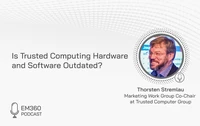
Is Trusted Computing Hardware and Software Outdated?
Trusted computing hardware and software is a broad set of technologies responsible for ensuring security in networks, office environments and computers. The practice of trusted computing has existed for decades now, but experts still question its benefits and efficiency. In fact, Catherine Fick from University of Sydney wrote a paper in 2004, concluding that trusted computing hardware and software "will not be an effective long-term solution to security woes, and could in fact hinder efforts to stamp out illegal and anti-social activities as." With that said, many people have contested this and argue in its favour. In 2009, Brian D. Berger famously noted that trusted computing can protect business critical data, secure authentication and strong protection of user IDs, establish strong machine identity and even ensure regulatory compliance with hard-ware based security.
Using Computing Hardware that Really Helps
Needless to say, trusted computing is a complex and heavily debated subject. Even today, in 2021, the debate continues, and organisations are still weighing up the benefits of what a trusted computing hardware or software system might bring to them. In traditional trusted computing hardware, technology is used to allow the user to decide what they can trust and what they can't. Of course, this advantage of freedom can seem fantastic to many users, but the debate opens up again surrounding the effectiveness of humans. We already know that humans make mistakes, and we know that sometimes computers can be much better judges than humans.
Opening this can of worms with us in this EM360 podcast is Thorsten Stremlau from Trusted Computer Group. In this podcast, we hear how far trusted computing hardware and software has come in the last few decades, what the future brings for it, the answers to some of the most popular questions in this hot topic and the benefits trusted computing can truly bring.







